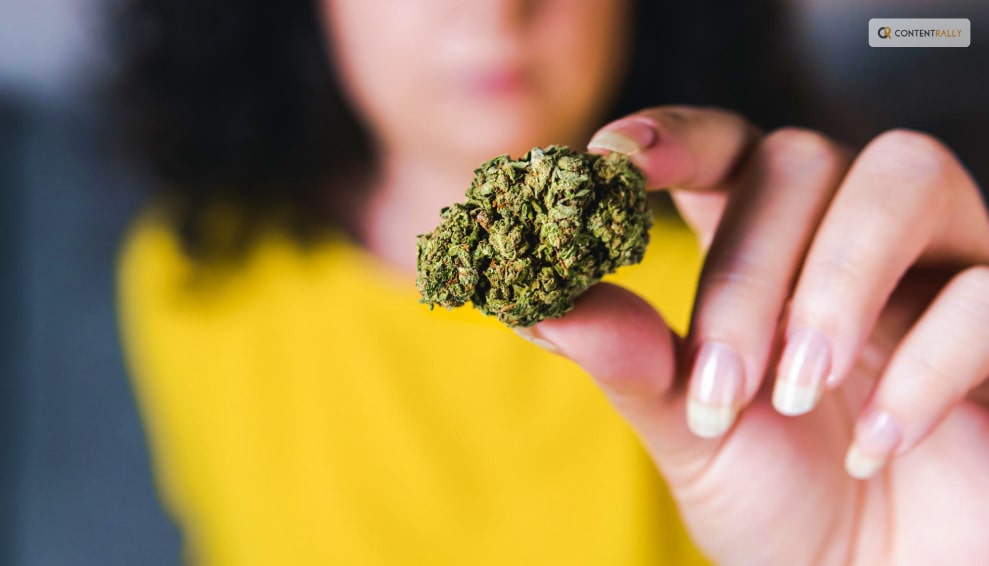Hello there, fellow cannabis enthusiasts! Today, I’m excited to take you on a flavorful journey into the world of homemade cannabis gummies. If you’ve ever wanted to try your hand at crafting these delectable treats, you’re in the right place.
Want to know how to make cannabis gummies? I have you covered! In this blog, I will walk you through the process step by step, from selecting the right strain to infusing your gummies with the perfect dose of cannabis goodness. So, roll up your sleeves (pun intended), and let’s get cooking!
Contents
Before We Dive In: A Word On Cannabis Strains

Choosing the right cannabis strain for your gummies is crucial. Each strain offers a unique flavor profile and effect, so consider what kind of experience you’re aiming for.
Personally, I like to use a hybrid strain for a balanced blend of relaxation and creativity. Indica strains can be too sedating for some, while sativa strains might make you a bit too chatty. A hybrid is often the sweet spot.
How To Make Cannabis Gummies: A Step-By-Step Guide That You Need!

Before we start with the steps, there is one thing I would like to make clear. While making cannabis gummies at home offers numerous benefits, it’s essential to approach the process responsibly, especially if you are new to cannabis edibles.
Start with lower doses, be patient, and remember to comply with local laws and regulations regarding the preparation and consumption of cannabis-infused products.
Now that it is done, let’s get started!
Step 1: Gather Your Ingredients And Tools
Before you start whipping up your cannabis-infused gummies, make sure you have everything you need. Here’s a list of what you’ll require:
- Cannabis tincture or cannabis-infused oil: This is the star of the show, providing THC or CBD goodness.
- Flavored gelatin packets: Choose your favorite flavors for a delightful twist.
- Unflavored gelatin: This will give your gummies the right texture.
- Sugar: For sweetness, of course!
- Water: To mix everything together.
- Silicone molds: These will help shape your gummies.
- A saucepan and a whisk: To heat and mix your ingredients.
- A dropper or syringe: For precise dosing.
Step 2: Calculate Your Dosage
Getting the dosage right is crucial. We want those gummies to provide a blissful experience, not send us to the moon! Start by determining how much THC or CBD is in your tincture or oil and calculate the dosage per gummy. For beginners, I recommend starting with a lower dose (around 5-10mg) and gradually increasing it as needed.
Step 3: Prepare Your Molds
Before you dive into the cooking process, prepare your silicone molds. Lightly coat them with cooking spray to prevent sticking later on. This step will ensure your gummies pop out effortlessly once they’re set.
Step 4: Mix Your Ingredients
Now, let’s get cooking! In your saucepan, combine the flavored gelatin packets, unflavored gelatin, sugar, and water. Stir everything together until it forms a smooth mixture. It should be free of lumps and evenly blended.
Step 5: Infuse With Cannabis
This is where the magic happens! Add your cannabis tincture or infused oil to the mixture. The dosage you calculated earlier will guide you here. Use a whisk to ensure the cannabis is evenly distributed throughout the mixture. Keep the heat low to avoid overheating the cannabis, which could affect its potency.
Step 6: Heat And Stir
Place your saucepan over low heat and continue to stir. You want to gently heat the mixture without boiling it. Keep stirring until all the ingredients are fully combined, and the mixture becomes smooth and shiny. This should take about 7-10 minutes.
Step 7: Fill Your Molds
Once your mixture is ready, use your dropper or syringe to fill the silicone molds. Take your time and be as precise as possible. This will ensure that each gummy has the correct dosage, and they’ll all look fantastic!
Step 8: Let Them Set
Patience is key at this stage. Allow your cannabis gummies to set at room temperature for at least 30 minutes. You can speed up the process by placing them in the refrigerator, but be careful not to freeze them.
Step 9: Pop And Enjoy!
The moment you’ve been waiting for has arrived! Carefully pop your gummies out of the molds and behold your homemade cannabis-infused creations. Store them in an airtight container in a cool, dark place to maintain their freshness.
The Beauty Of Homemade Cannabis Gummies

There’s something truly special about crafting your own cannabis gummies. You have full control over the ingredients, flavors, and dosages, ensuring a personalized experience every time. Plus, it’s a fun and rewarding process that allows you to experiment with different strains and flavors until you find your perfect match.
Now that you’ve learned the art of making cannabis gummies, the possibilities are endless. Whether you’re treating yourself or sharing with friends, these homemade delights are a delightful way to enjoy the benefits of cannabis in a delicious and discreet form. So, go ahead, put on your apron, and let your culinary creativity shine in the world of cannabis-infused treats!
Benefits Of Making Cannabis Gummies At Home!

Making cannabis gummies at home offers several benefits, which contribute to their popularity among cannabis enthusiasts. Here are some key advantages:
1. Control Over Ingredients:
When you make cannabis gummies at home, you have full control over the quality of ingredients. You can choose organic, non-GMO, and natural products, ensuring that your gummies are free from undesirable additives or artificial flavors.
2. Customizable Dosage:
One of the most significant advantages is the ability to customize the dosage. You can precisely measure the amount of cannabis you want in each gummy, allowing for consistent and accurate dosing. This is particularly important for medical cannabis users who require specific doses for their conditions.
3. Choice Of Strain:
Homemade gummies let you select the cannabis strain that suits your preferences and desired effects. Whether you want a relaxing Indica or an energizing sativa, you can tailor your gummies to your specific needs.
4. Variety Of Flavors:
You can experiment with an array of flavors, creating gummies that cater to your taste preferences. Whether you prefer fruity, sour, or herbal flavors, you have the freedom to get creative and craft gummies that delight your palate.
5. Cost-Effective:
Making your own cannabis gummies can be more cost-effective than purchasing pre-made edibles. You can buy cannabis flowers or extracts in bulk, which often offers better value for money, and create a substantial quantity of gummies.
6. Quality Control:
Home preparation allows for better quality control. You can ensure the cleanliness of your equipment and environment, reducing the risk of contamination. This is particularly crucial for individuals with allergies or dietary restrictions.
7. Privacy And Discretion:
Crafting your cannabis gummies at home offers privacy and discretion. You can enjoy the therapeutic benefits of cannabis without drawing attention to yourself or your cannabis consumption.
8. Fun And Educational:
The process of making cannabis gummies can be enjoyable and educational. It provides an opportunity to learn about the science of cannabis infusion and cooking techniques. It can be a fun activity to share with friends or loved ones.
9. Experimentation:
Homemade gummies encourage experimentation. You can try different recipes, ratios, and infusion methods until you find the perfect formula that suits your preferences and needs.
10. Longer Shelf Life:
Keep With proper storage, homemade cannabis gummies can have a longer shelf life compared to store-bought edibles. You can keep them fresh for an extended period, allowing you to enjoy them at your own pace.
Wrapping It Up!
In case you were searching about how to make cannabis gummies at home, I hope that this blog has been of help to you. If there are any other queries related to the same, feel free to let me know. All that you need to do is scroll down till you reach the bottom of the page, Then leave your comments and queries in the box below. And I will be there to answer them all for you!
Learn More About:






















